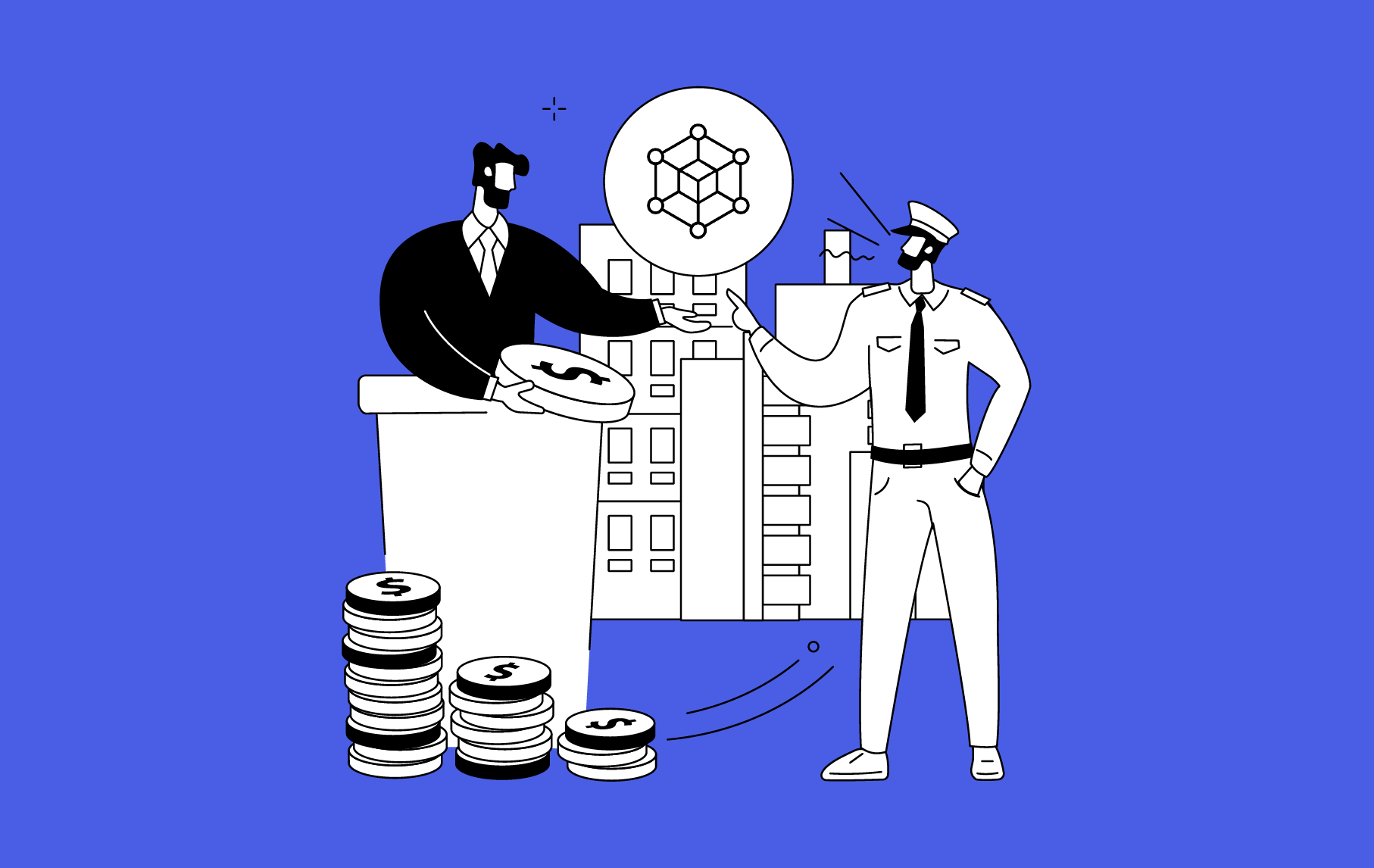Between the growing privacy concerns, changing regulations based on the market environment, a massive rise in data volumes, and the business world opening up to international trade and transactions, the regulatory compliance environment has become more complex than ever. For a business to excel in this landscape, it is critical that all their data is consolidated, verified, stored, and reported in whichever format the regulatory authorities need them to be in.
Fearing the efforts and costs that compliance-readiness brings, companies tend to avoid the process altogether, leading to a situation where both business cost and reputation comes at stake. Amidst these complexities, bringing and maintaining data on the blockchain gives clear benefits as they address the compliance requirements in an immutable and secure way.
In this article, we are going to dive into the role of blockchain in compliance and how the technology can help not just companies but also regulators in improving the compliance process.
The Possibilities of Blockchain for Regulatory Compliance
Blockchain has established itself as an immutable ledger which serves as a detailed record of access, change, and values. After the data gets entered on the blockchain, it cannot get amended, modified, or deleted. When these features get merged with the everyday business processes, businesses are able to prepare for their regulatory needs from the first stage of their product development or service origin.
On the other hand, navigating compliance with blockchain technology makes regulators’ lives easier as well. Blockchain’s shared architecture and security eliminates the need for manual oversight while streamlining the regulatory processes for the involved parties. By design, the blockchain architecture relieves regulators from the extensive processes of gathering, storing, reconciling, and aggregating the data themselves.
A working example of the merger of blockchain and compliance can be seen in regulatory reporting of transactions which consists of multiple parties like in case of reinsurance, the report covers insured, insurer, broker, and the regulator. Transactions handled between all these stakeholders can be complex in nature – an issue which blockchain can ease with its immutable ledger that can be viewed by all the parties, enabling them to meet the reporting obligations more speedily.
Strengthening the hold of blockchain for regulatory compliance, specially on the reporting end, the European Commission in 2017 started researching the application of blockchain to create a distributed record of financial reports across the EU, which can then be shared with the regulators and other interested stakeholders. While the project is still waiting for a time when GDPR laws will be replaced with complete decentralization, it has opened avenues for extensive hypothesis building.
The detailing of blockchain compliance often remains incomplete without looking at the blockchain solutions for regulatory compliance on a molecular level. Through its different facets that we will cover next, blockchain is disrupting the once traditional process to new digital and decentralized frontier.
Also Read- Compliance Management Software Development – Benefits, Use Cases, Process and Costs
The Different Dimensions of Blockchain Technology and Regulatory Compliance
Regulators and businesses alike are looking for more efficient ways to ease the complex compliance readiness process. And they are turning towards blockchain for this. Here are some ways blockchain for enterprises are now being incorporated on the regulatory compliance front.

- Know Your Customers (KYC) and Anti Money Laundering (AML)
Companies should collect customer information before they initiate their journey together as a part of the KYC and AML processes.
Modern-day KYC systems tend to depend heavily on third-party verification tools for establishing user identity, which comes with a massive amount of security risks. In a decentralized world, with blockchain-based KYC, the data gathered can be compared with the current data, and smart contracts can get automatically executed and verified in real time.
- Transaction Monitoring and Screening
The capability to scan and monitor users in real time helps in catching financial crimes as and when they are happening. The fact that blockchain and regulatory risk management enables these transaction tracking activities to run in real-time, helps the compliance team find red flags or suspicious activities.
Noting the rising adoption of virtual currencies in enterprises, blockchain is also being used to raise the security and speed of automated transaction monitoring, while offering better traceability and faster analysis.
- Record Storage
The adoption of big data analytics in enterprises is on a rise. However, the problem with the technology is that it creates a lot of unstructured and underutilized data whose storing and retrieving can become challenging for operational and audit uses.
Blockchain and regulatory risk management combination enables companies to access updated information, irrespective of the format and even secure the information in real time. As a result, a quick access to necessary data to complete the regulation and compliance processes can be provided.
- Fraud Prevention
While regulation is often associated with data storage and user identities, it also plays a critical part in helping prevent fraud.
On that end, blockchain for enterprises are used to create encrypted data blocks to prevent hackers from viewing and accessing sensitive business data. Blockchain regulatory compliance calls for exact data matches from one block to another, meaning the hackers will have to do the impossible task of configuring their systems in a way that it receives alerts when the synthetic artifacts are employed for transactions and account creation.
The four use cases of navigating compliance with blockchain technology are only surface-level exploration of how far the technology can go in the regulation space. Understanding the depth of the application is still underway and Appinventiv is a part of that journey. We are helping enterprises, across domains, eliminate the implications of non-compliance by integrating blockchain with technologies like AI and IoT into the regulation preparedness journey.
We recently worked on a pilot project where a mHealth app was being prepared for regulation compliances. As part of the proof of concept creation process, we worked around several challenges and their experiment-based solutions.
Here’s a brief of those regulatory challenges for enterprises that we found a workaround for.
Scalability – Blockchain faces the inability to process multiple transactions at a reasonable rate. Now while this is a good thing as it lowers the chances of malicious conduct, the time it takes to perform transactions increases. To solve this, our enterprise blockchain consultants apply a range of techniques like lightning the network, sharding, and applying proof-of-stake consensus algorithm.
Storage – Blockchain regulatory compliance processes like app appraisal, incident reporting, and pre-certification creates a lot of data in the form of images or files. All of this leads to a situation where the blockchain network runs out of storage space. To tackle this, we looked at decentralized storage systems like Filecoin and IPFS which generate the permanent hashes of the stored data.
Privacy – Ensuring patients’ data anonymity is key to regulating the medical apps. With blockchain, all the participating parties are able to see the transactions on a public blockchain and the public address of the parties can be used to identify them. Now while all the data is encrypted when you follow blockchain regulatory compliances, hackers with some information around patients’ medical histories can create a link between users’ real identity and their public address. We found a solution to this by investing in a more controlled environment, which platforms like Besu or Hyperledger Fabric offer as a part of our blockchain development services.
So here are some ways we are solving regulatory challenges for enterprises and blockchain by working with businesses that are ready to take the leap towards digitalization by investing in next-gen technologies. If you too are looking for ways to incorporate blockchain for enterprises, get in touch with us today.
FAQs
Q. How can blockchain technology help enterprises ensure compliance?
A. Blockchain aids businesses in becoming compliance-ready by bringing all the data on an immutable ledger, from where the regulators can view the transaction history and trace if the laws have been followed. The fact that the data that goes into the blockchain network is impossible to modify, the regulators can be rest assured that they won’t have to perform the manual inspection tasks.
Q. What are the benefits of leveraging blockchain in compliance processes?
A. Blockchain offers a range of benefits to enterprises when they opt for the technology for their compliance process – easy KYC/AML, fraud prevention, immutable data storage, and real-time transaction monitoring.


Unleashing the Potential of Blockchain in Digital Identity Verification and Management
Digital identity is how the internet uniquely identifies us. It could be our social media credentials, an order ID against the Amazon order, or our email addresses. But what happens when someone takes on our identity with malicious intent? It's more common than we believe. In the US alone, around 1 in 3 Americans have…

Is Blockchain Intellectual Property Protection the Answer to Creators’ Copyright Problems?
The massive influx and easy, inspired generation of data, media, and codes has brought the focus of lawmakers and businesses on patents and IP protection rights. Their demand is similar - the ideas and data created by a party (could be business or users) should not be copied and passed as own by someone else.…











